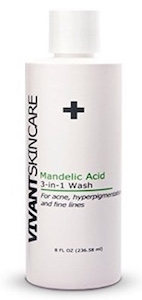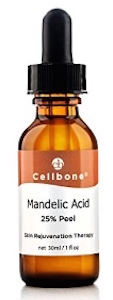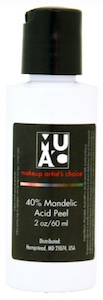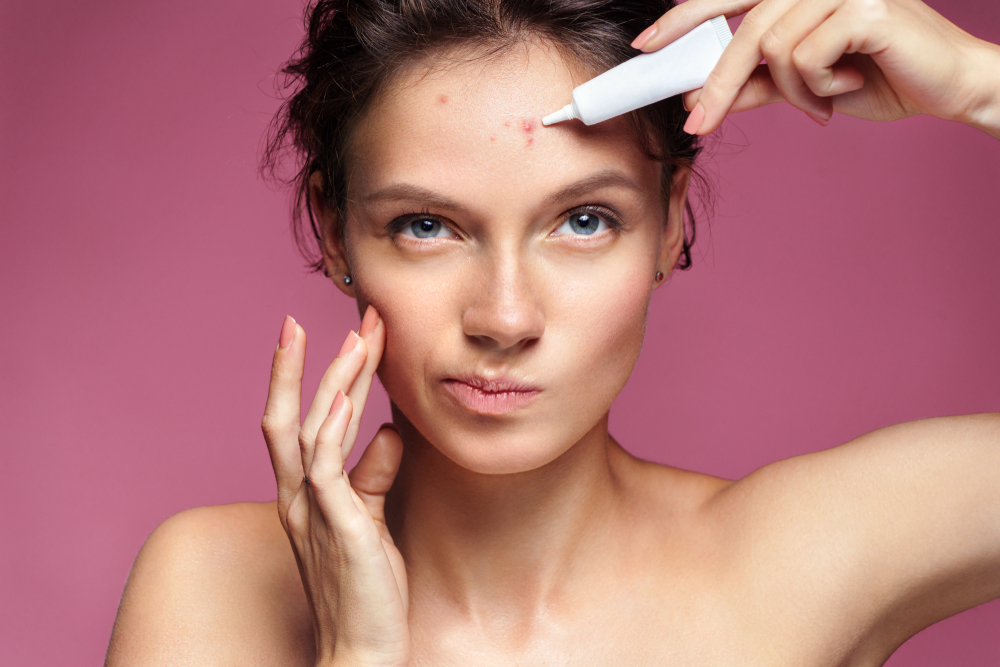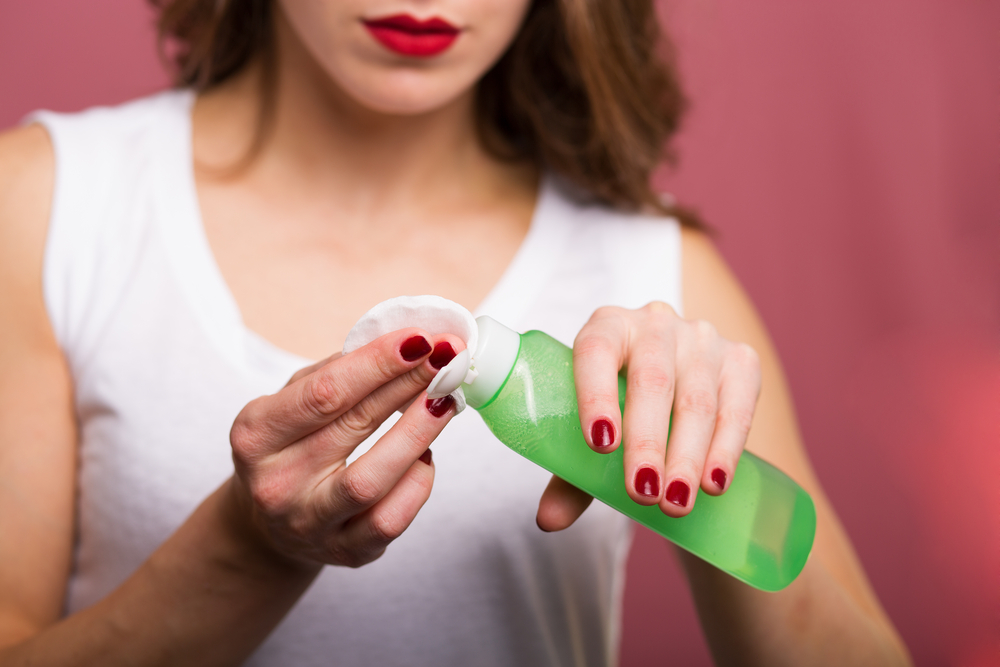- Mandelic acid is used as a gentle chemical peel on sensitive skin and darker skin tones.
- Professional and at-home product options come in different strengths.
- Caution is advised when using chemical peels with higher acid concentrations.
When it comes to facial care, supporting and nourishing the skin’s natural chemical balance is key to staving off the signs of aging.
Mandelic acid, a natural chemical peeling agent, is used to accelerate cell turnover. This helps reduce the appearance of fine lines, dark patches, acne blemishes, and other common skin concerns.
Here’s what you need to know about this versatile facial rejuvenation treatment and the wide range of product options to choose from.
What is mandelic acid?
Mandelic acid is a type of alpha hydroxy acid that’s extracted from bitter almonds.
Alpha hydroxy acids are also found in other types of food, such as citrus fruits, grapes, and tomato juice. These natural exfoliating agents come in different strengths and produce varied effects when applied to the skin.
Mandelic acid acts as a powerful — yet gentle — exfoliator that breaks up the tiny bonds between dead cells at the skin’s surface, making it an effective component in chemical peels.
Compared to chemical peels containing salicylic, glycolic or lactic acids, mandelic acid is lower in strength but produces longer-lasting effects.
Benefits of mandelic acid peels
Mandelic acid’s gentle peeling effect can be attributed to its molecular structure.
Since its molecules are larger than those found in glycolic acid and other alpha hydroxy acids, mandelic acid takes longer to penetrate the skin’s surface. This makes it less likely to cause irritation.
As a chemical peel, mandelic acid offers a wide range of treatment benefits:
- Reducing dark spots
- Improving skin texture
- Lightening freckles
- Refining skin tone
- Unclogging skin pores
- Reducing acne
- Lightening skin tone
- Reducing fine lines
- Evening out the complexion
- Being compatible with all skin types
“What is particularly nice about mandelic acid peels is that they generally don’t cause a lot of inflammation,” says Stamford, CT dermatologist Dr. Robin Evans. “As such, they are a safer option for treating darker skin-type individuals, resulting in less risk of post-inflammatory hyperpigmentation or brown discoloration.”
How often should you use mandelic acid?
Professional and at-home mandelic acid formulas come in different strengths.
Higher strength concentrations — such as 40% or greater — should only be applied by a dermatologist or qualified provider. Treatments can be scheduled every other week or possibly on a weekly basis, depending on healing time.
At-home peel products typically have a 20–25% percent concentration. They can generally be applied several times a week, depending on how well your skin tolerates them. Skin should be fully healed before applying another peel.
People whose skin is prone to cold sores may want to have a dermatologist perform the peel, since it can trigger outbreaks; your dermatologist can prescribe antiviral medications to prevent this.
Does mandelic acid have any side effects?
As with any chemical peeling agent, mandelic acid peels can cause side effects, but taking certain precautions will greatly minimize these risks.
While this type of treatment mainly interacts with surface layer skin cells, it does stimulate tissue remodeling and collagen fiber production. People with darker complexions or sensitive skin are therefore at higher risk of discoloration and scarring, two side effects that are common to all chemical peels.
Immediately after applying mandelic acid, the skin will feel sensitive. It may also become dry, a little flaky and take on a pinkish color. It typically takes two to three days for the skin to fully heal. During this time, it’s especially important to avoid sun exposure, scrubs, and strong cleaning agents. Using sunscreen with an SPF of 30 or higher is recommended.
Using mandelic acid as an acne treatment may also result in purging, as clogged pores underneath the skin rise to the surface. In most cases, these pimples will go away within two or three days.
Recommended at-home products
If you’re interested in trying mandelic acid at home, consider these products, but always check ingredient labels for any substances you might be allergic or sensitive to.
Vivant Skin Care Mandelic Acid 3-in-1 Wash
Vivant Skin Care Mandelic Acid 3-in-1 Wash is a facial and body wash that combines mandelic acid with green tea extract. Advertised as a natural skin lightener, Vivant can be used as a daily cleanser to address the following concerns:
- Blemishes
- Uneven skin tone
- Age spots
- Wrinkles
- Oily skin
- Adult acne
- Clogged pores
Its formula contains antioxidant ingredients to neutralize the free radicals that damage skin cells, while its exfoliant effects help rid the skin of blackheads and acne-causing bacteria.
Approximate price: $40.00
Cellbone Mandelic Acid Peel Serum
Cellbone Mandelic Acid Peel Serum is a gel that combines a 25% mandelic acid concentration with menthol and cucumber flower extract to soothe and refresh the skin.
This at-home product exfoliates dead skin cells and stimulates the growth of new cells. Continued use improves the skin’s elasticity and hydration, giving it a smoother, more even appearance.
Cellbone also claims other treatment benefits, such as:
- Reducing acne scarring
- Lightening the appearance of age spots
- Reducing hyperpigmentation
Approximate price: $29.95
Divine Derriere Mandelic Acid Peel 40%
Divine Derriere Mandelic Acid Peel 40% is another high concentration at-home chemical peel that should only be used once skin can tolerate products with a 25% concentration. As a peeling agent, it absorbs into the deeper layers of the skin to act as a resurfacing treatment.
This product offers a range of treatment benefits:
- Shrinking large pores
- Reducing acne
- Brightening darker skin tones
- Repairing sun damage
- Breaking up blackheads for easy extraction
- Reducing the redness and pus-filled bumps brought on by rosacea
Approximate price: $19.95
Makeup Artist’s Choice 40% Mandelic Acid Peel
As one of the strongest over-the-counter chemical peels, 40% Mandelic Acid Peel from Makeup Artist’s Choice isn’t a beginner’s peel. It should only be used in instances where the skin has tolerated applications of a 20–30% mandelic acid concentration.
It produces rapid results by exfoliating dead skin cells and clearing the pores of oily buildup.
Other benefits include:
- Loosening blackheads for easy removal
- Reducing lines and wrinkles
- Restoring sun-damaged skin
- Brightening skin complexion
- Smoothing out uneven skin tones
- Hydrating skin
Approximate price: $38.95
Some final words of caution
While mandelic acid peels can work wonders for the complexion, over-exfoliating can have the opposite effect by causing actual damage to the skin.
When using mandelic-based skin products, dermatologist Pamela Miller, MCMS, PA-C of Minars Dermatology in Hollywood, FL recommends the following:
“OTC skincare percentages can be misleading. More is not better. Also, daily sunscreen is an imperative part of your beauty routine, especially when using products such as those containing mandelic acid that make you more sun-sensitive.”
All in all, if you’re looking for a natural solution that reduces signs of aging and works well with sensitive skin, mandelic acid fits the bill. Considering the range of products available, it’s best to start with lower concentration formulas to see how your skin responds.
» For more information on mandelic acid and other chemical peels, consult our medical review team for more information and options.






